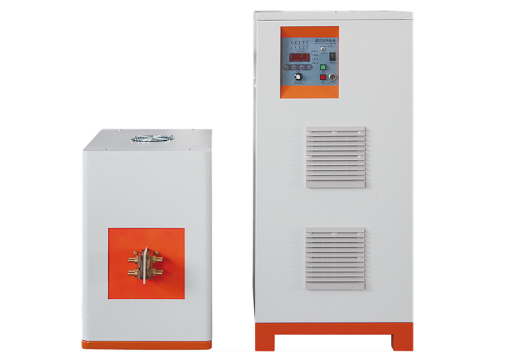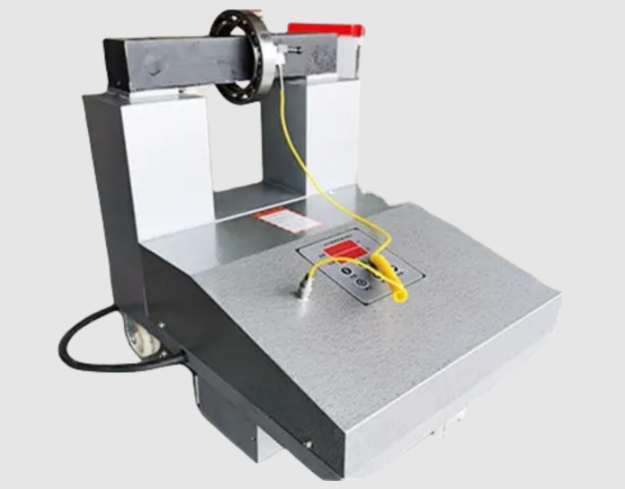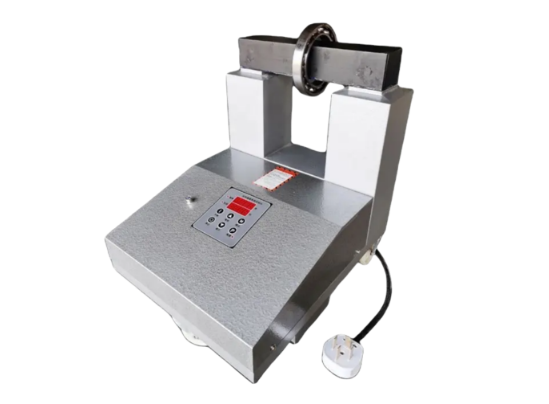Induction Furnace Basics
Operating Principle
You use an induction furnace to heat metals without direct contact. The furnace creates a strong magnetic field by running alternating current through a coil. When you place a metal workpiece inside this coil, the magnetic field causes electric currents, called eddy currents, to flow inside the metal. These currents heat the metal quickly and efficiently. You can control the temperature by adjusting the power and frequency. This method keeps your workspace cleaner and safer because there is no open flame or direct heating element.
Frequency Impact
The frequency of the current in your induction furnace changes how the heat moves through the metal. If you use a high frequency induction furnace, you get rapid and precise surface heating. This works well for jobs like brazing, soldering, or surface hardening. When you need to heat deeper into the metal, a lower frequency works better. Low-frequency furnaces give you deep, even heating, which is important for forging or stress relieving.
Tip: Choosing the right frequency helps you avoid overheating the surface or leaving the core too cool.
Here is a table that shows how different frequencies affect heating and common uses:
Frequency Type | Key Characteristics | Common Applications |
|---|
Low-Frequency | Deep heat penetration, uniform heating | Forging, stress relieving, preheating for welding |
High-Frequency | Surface heating, precise control, rapid heating | Brazing, soldering, surface hardening |

High Frequency Induction Furnace
Definition
A high frequency induction furnace (10–400 kHz) provides precise and rapid heating, ideal for tasks requiring accuracy and speed.
HFIF offers fast, controllable, and energy-efficient surface heating by directly heating the workpiece. This minimizes thermal damage, enhances corrosion and wear resistance, and ensures desired hardness and durability.
Tip: You can integrate a high frequency induction furnace into automated production lines for continuous operations. This setup increases throughput and reduces cycle times.
Advantages
Advantage | Description |
|---|
High Efficiency | You convert up to 90% of energy into useful heat, saving power. |
Precision | You control and localize heating without contact, managing temperature exactly. |
Speed | You reduce heating time by over 50% compared to older methods, increasing productivity. |
Cleanliness | You keep the process clean, which improves product quality. |
Cost-Effectiveness | You lower operational costs and save money compared to traditional heating technologies. |
Disadvantages
Disadvantage | Description |
|---|
Lack of refining capacity | You must use charge materials free of oxides and with known composition. Some alloying elements may be lost. |
Tendency for supercooling | Molten iron can form undesirable graphite types, affecting mechanical properties. |
Potential for casting defects | Poor inoculation can lead to low casting strength and increased shrinkage. |
Increased shrinkage tendency | High manganese content may cause micro shrinkage cavities and porosity in cast iron. |
Medium Frequency Furnaces
Definition
A medium frequency induction furnace (500 Hz–10 kHz) provides deep, even heating, making it ideal for melting, forging, and heat treating metals in both small and large batches.
MFIF ensures strong heat penetration, heating the core of thick parts without surface overheating. This delivers uniform temperature, better metallurgical quality, and reduced risk of cracks or weak spots—perfect for melting steel, iron, and alloys.
Note: Deep heating helps you avoid surface-only hardening and ensures the entire part reaches the desired temperature.
Medium Frequency Induction Furnace (MFIF) – Pros & Cons
Advantages
Energy-efficient: Saves on power costs.
High-quality output: Enhanced metallurgical control.
Compact: Fits small or crowded workshops, saves floor space.
Safe: Advanced systems like leakage alarms prevent hazards.
Low maintenance: Reduces downtime and keeps operations smooth.
Disadvantages
Limited refining: Requires clean charge materials.
Material constraints: Known composition needed; alloy loss may increase costs.
Operational complexity: Skilled workers needed for precise control.
Applications
You can use medium frequency induction furnaces for many industrial tasks:
Heating and forging standard parts
Melting various metal materials
Motor rotor heating and pipe expansion
Die heating and shaft quenching
Welding preheating and post-weld tempering
Shrink-fitting and brazing
Annealing and other heat treatments
Ceramic and composite processing
Medium frequency furnaces give you flexibility for both production and repair work.
Low Frequency Furnaces
Definition
A low frequency induction furnace (below 500 Hz) provides deep, uniform heating for large or thick metal parts, ideal for heavy-duty industrial tasks.
LFIF ensures strong heat penetration, heating the core without overheating the surface. The magnetic field reaches deep inside, delivering even temperature for forging, stress relieving, and other demanding processes.
Note: Deep penetration makes low frequency furnaces ideal for treating large steel billets or thick castings.
Advantages
You get uniform heating for large and thick parts.
You reduce the risk of cracks and weak spots.
You improve metallurgical properties by heating the entire workpiece.
You can process heavy-duty materials with confidence.
Advantage | Benefit |
|---|
Deep penetration | Heats core and surface evenly |
Reliability | Handles large-scale industrial tasks |
Consistency | Produces repeatable results |
Disadvantages
You need more energy to heat large masses.
You may face slower heating times compared to high frequency furnaces.
You require bigger equipment and more space.
You must invest in higher initial costs for installation.
Applications
You can use low frequency induction furnaces for:
Forging large steel parts
Stress relieving thick castings
Preheating for welding heavy sections
Melting and refining metals in foundries
Treating billets and ingots
Tip: Choose a low frequency furnace when you work with big, dense metal pieces and need deep, even heating.
Furnace Comparison
Efficiency
You want to know which induction furnace uses energy best. High frequency induction furnaces convert most of the input power into heat at the surface. You get fast results and save energy for small jobs. Medium frequency furnaces offer good efficiency for melting and heating larger parts. You can process more metal at once. Low frequency furnaces use more energy because they heat big, thick workpieces. You may see slower heating and higher power bills.
Furnace Type | Efficiency Level | Best Use Case |
|---|
High Frequency | Very High | Small parts, surface heating |
Medium Frequency | High | Melting, forging, batch work |
Low Frequency | Moderate | Large, thick workpieces |
Tip: Choose high frequency for quick jobs and medium or low frequency for bigger tasks.
Heating Depth
Heating depth matters when you work with different sizes of metal. High frequency induction furnaces heat only the surface. You get a thin, hard layer. Medium frequency furnaces heat deeper into the metal. You can treat the whole part evenly. Low frequency furnaces reach the core of thick materials. You get uniform heat from surface to center.
High frequency: Best for surface hardening and small parts.
Medium frequency: Good for medium-sized workpieces and melting.
Low frequency: Ideal for large billets and deep heating.
Precision
You need precise temperature control for quality results. High frequency induction furnaces give you excellent control. You can set the temperature quickly and keep it steady. Medium frequency furnaces offer better temperature uniformity. You get even heating for bigger parts. Low frequency furnaces provide good control for deep heating, but the process is slower.
Induction Furnace Type | Precision of Temperature Control | Characteristics |
|---|
High Frequency | Excellent for rapid heating and precise control | Ideal for small workpieces and surface-level heating |
Medium Frequency | Better for temperature uniformity | Suitable for larger workpieces |
Low Frequency | Good for deeper heat penetration | Used for thicker materials, slower heating |
Note: Use high frequency induction furnace for jobs that need fast and accurate temperature changes.
Cost
Cost affects your choice. High frequency induction furnaces cost less to run for small jobs. You save money on energy and maintenance. Medium frequency furnaces have moderate costs. You pay more up front, but you get good value for batch processing. Low frequency furnaces cost more to buy and operate. You need bigger equipment and more power.
Furnace Type | Initial Cost | Operating Cost | Maintenance Cost |
|---|
High Frequency | Low | Low | Low |
Medium Frequency | Moderate | Moderate | Moderate |
Low Frequency | High | High | High |
Suitability
You must match the furnace to your job. High frequency induction furnace works best for surface heating, brazing, and small parts. Medium frequency suits melting, forging, and heat treating. Low frequency fits large-scale jobs, thick castings, and deep heating.
High frequency: Surface hardening, jewelry, electronics.
Medium frequency: Foundries, automotive, general manufacturing.
Low frequency: Heavy industry, steel mills, large castings.
Selection Tips
Key Factors
When you choose an induction furnace, you need to look at several important details. These factors help you get the best results for your heating job. You want to make sure your furnace matches your needs and works efficiently.
Material of the coil: Pick coils made from high-conductivity metals like copper or aluminum. These materials transfer energy better and heat your parts faster.
Shape and size of the coil: Larger coils cover more surface area and heat more evenly. The coil should fit the shape of your part for maximum efficiency.
Power supply and voltage requirements: Check that your power source matches the coil and furnace. This prevents energy loss and keeps your system safe.
Coupling efficiency: Place your workpiece close to the coil. Tight coupling increases heat generation and reduces wasted energy.
You also need to consider these technical points:
Your part’s material. Conductive metals heat up faster and more evenly.
Depth of heating penetration. Bigger parts take longer to heat and need more energy.
Operating frequency. Use lower frequencies for large parts and higher frequencies for surface heating.
Applied power. More power means faster heating, but you must control it to avoid damage.
Rise in temperature required. If you need a big temperature change, you need more power.
Coil design. Match the coil shape to your part for better results.
FAQ
What frequency should you choose for surface hardening?
You should select high frequency, usually between 100 kHz and 400 kHz. This range gives you fast, precise heating for surface treatments.
Tip: Higher frequency means shallower heat penetration.
Can you use one furnace for different metals?
You can use one induction furnace for various metals. You must adjust the frequency and power settings to match each metal’s heating needs.
Metal | Recommended Frequency |
|---|
Steel | Medium |
Copper | High |
Aluminum | Low |
How does furnace frequency affect energy costs?
Lower frequency furnaces use more energy for large parts. High frequency furnaces save energy for small jobs. You should match frequency to workpiece size for best efficiency.






